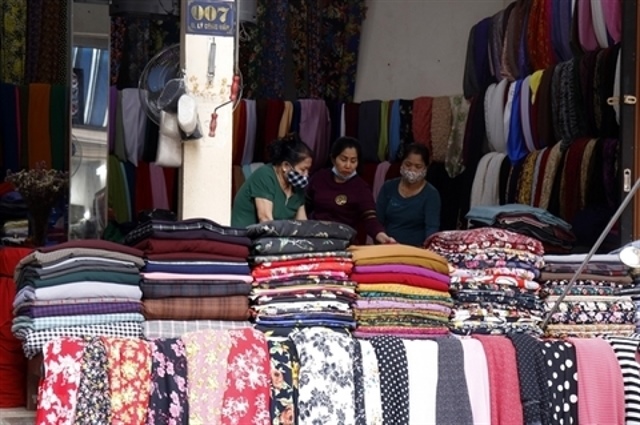Forex fluctuations forecast to be temporary
Forex fluctuations forecast to be temporary
Since the start of June, the Vietnamese dong has been falling against the US dollar after a long time of stability.

In the afternoon of June 16, the forex rate at some gold shops in HCM City's District 1 was between VND21,200 and 21,300 per dollar, up by VND50 or 100 compared to three days earlier.
At commercial banks, the rate was VND21,036 per dollar.
The central bank itself made some adjustments to its forex rate. In particular, on June 16, the bank increased its selling price from VND20,950 to VND21,036 per dollar, and its buying price to VND20,850.
The remarkable thing in the latest fluctuation is that the buying and selling prices of the dollar are very close and sometimes they are the same. This means that the increase in market demand for the greenback is real.
There are many reasons for the current increase in the forex rate, one of which is the increasing trade deficit.
In May, the country's trade deficit jumped sharply to US$1.9 billion, up by VND0.9 billion over the previous month. The increase has put significant pressure on the forex rate.
Another reason is the spurt in import of gold to meet the demand of commercial banks to repay gold depositors before June 30, as required by the central bank.
Local commercial banks have so far bought more than 13.7 tonnes out of 15.22 tonnes of gold bullion offered by the SBV via 13 bidding sessions. They bought some 100 tonnes of bullion last year for the same purpose.
According to the central bank, the amount of gold needed to be bought until June 30, 2013 is around 20 tonnes.
The purchase is aimed at making up for the volume of gold that local banks have received from depositors in the past years, but had converted to Vietnamese dong for lending.
The central bank in October (2012) ordered local lenders to stop taking gold deposits from customers starting June 30.
With the huge demand, a considerable amount of dollars is believed to be used for importing the gold.
The current pricing gap between local and international gold bullion has also contributed to the increase in the forex rate.
Because the domestic gold price now is much higher than the global rate, many people are seeking ways to illegally import gold and profit from the difference.
The central bank's continuous cuts in the interest rate for deposits and loans in recent months have also affected the forex rate.
In the past, the interest rate for dong deposits was much higher than that of the dollar deposits (14 and 2 per cent per year, respectively), so many people sold the latter to enjoy the difference.
Now, the gap between the interest rates of dong and the dollar has narrowed, so people are looking to buy dollars for greater security.
For enterprises, the interest rate of dong loans has become more attractive, so those that had taken dollar loans decided to buy the greenback to pay them back, and then took dong loans to reduce forex rate related risks.
Despite all these reasons, the fall in the dong is not likely to increase by much or last much longer since the entire banking system's foreign currency liquidity is still good and foreign currency reserves are still plentiful.
In addition, when the banks complete repayment of gold deposits at the end of this June, demand for the greenback will fall.
In other words, the fluctuation of the forex rate is temporary and would soon become stable again. However, it also suggests that the central bank should consider adjusting the forex rate by 2 or 3 per cent to support the country's exports.
vietnamnews

























